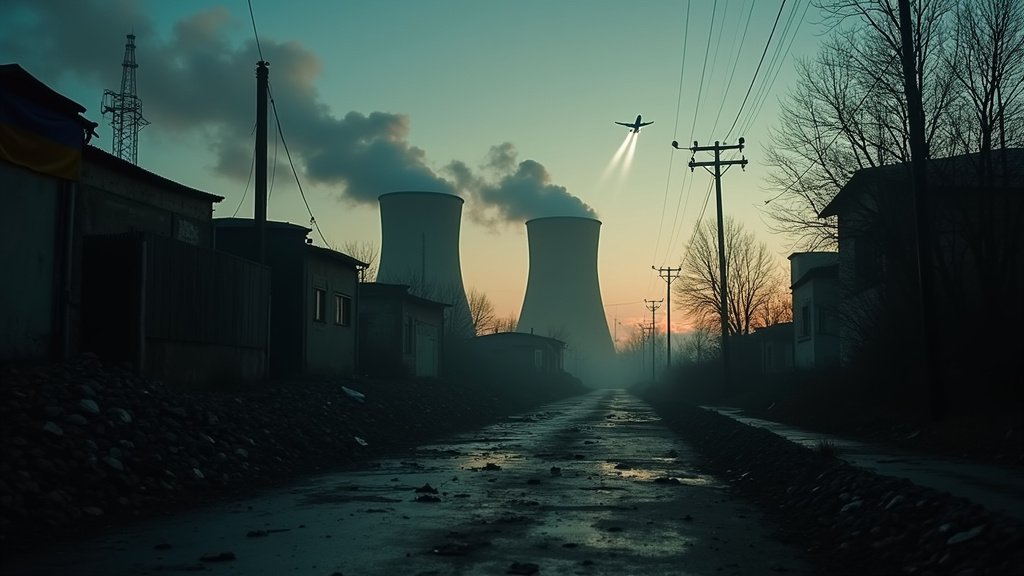In a significant day for world news, multiple critical developments unfolded across the globe, highlighting ongoing conflicts, critical infrastructure challenges, and humanitarian efforts. Civilians in Ukraine have borne the brunt of escalating attacks in recent days, while a crucial step towards restoring external power to the Zaporizhzhya Nuclear Power Plant has been initiated. Concurrently, the first humanitarian flight of the year successfully transported vulnerable Syrian migrants from Libya back to their homeland.
Ukraine Faces Intensified Conflict and Humanitarian Strain
Over the past three days, Ukraine has witnessed a surge in civilian casualties and damage to vital infrastructure. Reports indicate that most casualties have been concentrated in the Kherson, Sumy, Donetsk, and Kharkiv regions, with authorities reporting at least a dozen civilians killed and over 80 injured in a three-day period. As of October 10th, regional authorities confirmed that Russian attacks across Ukraine killed at least six civilians, including a child, and injured at least 45 in the preceding 24 hours. This escalating aerial campaign, featuring a significant deployment of drones and missiles, has intensified ahead of the winter months. Strikes have targeted substations, power plants, and oil depots in regions including Chernihiv, Kharkiv, Odesa, and Donetsk, leading to temporary electricity cutoffs for hundreds of thousands of homes and businesses. The town of Shostka in the Sumy region was particularly hard-hit, leaving approximately 70,000 people without power and disrupting essential services. UN Spokesperson Stéphane Dujarric noted that these strikes on critical infrastructure are deepening humanitarian needs as colder weather sets in.
Zaporizhzhya Nuclear Plant on Path to Power Restoration
A glimmer of hope has emerged regarding the safety and operational status of Ukraine’s Zaporizhzhya Nuclear Power Plant (ZNPP). Following intensive consultations between Ukrainian and Russian authorities, facilitated by the International Atomic Energy Agency (IAEA), a process has begun to restore external electricity supply to the facility. The ZNPP lost its connection to the national grid for the tenth time on September 23rd, forcing it to rely on emergency diesel generators for essential cooling functions for its six shutdown reactors and spent fuel. IAEA Director General Rafael Mariano Grossi emphasized that while restoring the grid connection will take time, the constructive engagement from both sides is vital for nuclear safety and security. The IAEA team on-site continues to monitor the situation, confirming that reactor coolant temperatures remain stable, indicating that fuel is being cooled effectively, despite the precarious reliance on backup power.
Humanitarian Flight Facilitates Syrian Return from Libya
In a significant humanitarian development, the International Organization for Migration (IOM) facilitated the first Voluntary Humanitarian Return (VHR) flight of 2025 for Syrian migrants from Libya to Damascus. On October 8th, 152 vulnerable Syrian individuals, many of whom had resided in Libya for over a decade, departed from Tripoli. This operation, conducted at the request of Syria’s Ministry of Foreign Affairs and Expatriates, is part of IOM’s expanded efforts to support Syria’s post-conflict recovery and ensure dignified returns. The IOM provided pre-departure assistance in Tripoli and reception support, including onward transportation to various Syrian cities, for the returnees. The agency will also offer reintegration assistance to help these families rebuild their lives. This initiative was supported by the EU-funded Migrant Protection, Return, and Reintegration in North Africa programme.
Broader Peace and Security Landscape
These immediate news items unfold against a backdrop of ongoing global efforts in peacebuilding and security, areas where significant challenges persist. The United Nations Department of Political and Peacebuilding Affairs (DPPA) continues to champion the Women, Peace and Security (WPS) agenda, aiming for greater female participation in peace processes. Despite global commitments and numerous initiatives stemming from UN Security Council Resolution 1325, the inclusion of women in formal peacemaking remains low. Furthermore, women-led organizations working on the frontlines of conflict and peacebuilding are reportedly facing a funding crisis, threatening decades of progress in gender equality within security frameworks. The persistent integration of gender equality into peace and security efforts remains a critical, albeit often underfunded, priority for global stability.
As the world grapples with these pressing issues, the focus remains on mitigating immediate humanitarian crises, ensuring the safety of critical infrastructure, and fostering long-term peace and security, with a growing recognition of the indispensable role of women in these endeavors.

